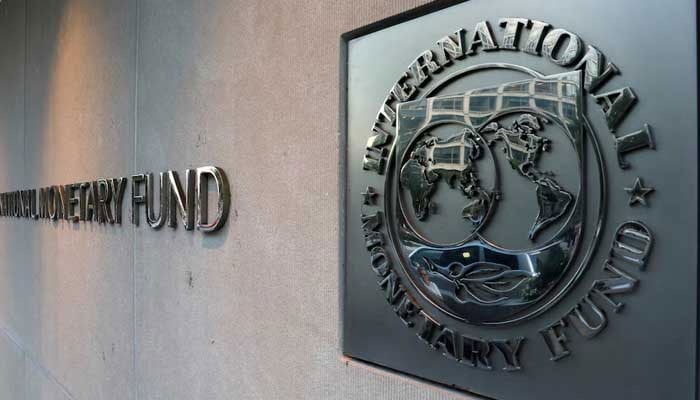On Tuesday, the International Monetary Fund (IMF) announced that it would take a look at Pakistan’s request for a $2.3 billion package on May 9. This includes the green light for the 26th new climate program, which should help clarify the ongoing relationship between the IMF and Pakistan for the markets.
If the board gives its approval, the IMF plans to immediately release a $1 billion second loan tranche as part of the $7 billion Extended Fund Facility (EFF). Additionally, the board is likely to approve a new $1.3 billion Resilience and Sustainability Facility (RSF), but keep in mind that disbursements from the RSF will depend on meeting about 13 conditions, one of which includes implementing a carbon levy starting in July.
According to the IMF’s board calendar, Pakistan’s case is set to be discussed during the board meeting on May 9. The agenda will cover the first review under the EFF, a request to modify performance criteria, and arrangements under the RSF.
Pakistan has managed to meet most of the conditions laid out by the IMF for the July-December period, but it has fallen short on a few, which means the board will need to approve certain waivers to unlock that crucial $1 billion second loan tranche.
This time around, India is expected to oppose Pakistan’s request due to heightened security concerns and worries about a perceived “imminent” threat. However, it’s important to note that India’s opposition in the IMF board won’t be able to block the approval of the tranche.
On March 27, Pakistan and the IMF reached a staff-level agreement to wrap up the second review and kick off the 26th financing facility.
Prime Minister Shehbaz Sharif had previously promised that the 25th EFF would be the last IMF program for the country. However, the RSF loan will now be distributed over a 28-month period.
Pakistan’s official gross foreign exchange reserves have taken another hit, dropping to $10.2 billion after a $1.3 billion debt repayment to a Chinese commercial bank. However, the upcoming disbursement from the IMF is expected to boost reserves back above $11 billion, just in time for more scheduled repayments to Chinese lenders.
To qualify for the new program, Pakistan has agreed to implement a carbon levy starting this July and to raise water usage charges next year—these are crucial conditions tied to the $1.3 billion RSF. The carbon levy aims to offset the fiscal impact of lower import duties on vehicles and their parts.
The government has emphasized that this new program is essential for supporting reforms that address vulnerabilities to natural disasters and improve climate resilience. In return for the funding, Pakistan has pledged to enhance public investment processes at all government levels, focusing on projects that bolster disaster resilience.
Other commitments include boosting water resource efficiency through better pricing strategies, improving coordination between governments on disaster financing, upgrading information systems, disclosing financial and corporate climate-related risks, and promoting green mobility to tackle pollution and its negative health effects.
As part of the staff-level agreement, Islamabad has reluctantly agreed to start a study on phasing out existing Special Economic Zones (SEZs) by 2035. The American consulting firm AT Kearney has been assigned to complete this study by June.
Additionally, the IMF has consented to lower Pakistan’s tax collection target to Rs12.33 trillion from Rs12.97 trillion—a reduction of Rs640 billion. However, the Federal Board of Revenue (FBR) is still projected to fall significantly short of even this revised target and is currently struggling to meet the Rs983 billion goal set for April.
Another IMF mission is set to land in Islamabad on May 14 to take a closer look at and approve the budget for the next fiscal year, which is expected to be presented to the National Assembly around June 2.
After discussions in March, the IMF has lowered Pakistan’s economic growth forecast to 2.5% and trimmed the inflation forecast to 5.1%. This indicates that while inflation is starting to ease, job creation is still lagging due to slow economic growth.
Pakistan hasn’t received the green light from the IMF for significant interest rate cuts, and the global lender has recommended that the central bank stick to a tight monetary policy.
Additionally, the IMF has drastically revised its estimate for Pakistan’s current account deficit this fiscal year, dropping it from $3.7 billion to about $400 million. On the other hand, the World Bank is predicting an $800 million surplus, suggesting that immediate risks in the external sector have lessened. However, the long-term outlook still depends on ongoing foreign loan rollovers and effective management of imports.
For the latest updates and insights on new developments, visit the NEWSON
Q1. What is the significance of the May 9 decision?
The global financial agency is set to approve a $2.3 billion package, which includes $1 billion under an existing program and $1.3 billion under a new climate-focused facility.
Q2. What is the RSF and why is it important?
The Resilience and Sustainability Facility (RSF) is a 28-month loan program focused on climate reforms, such as carbon levies and water pricing to strengthen Pakistan’s disaster resilience.
Q3. Is India opposing this package?
Yes, India is expected to oppose the deal due to security concerns, but it does not have veto power in the board.
Q4. What reforms has Pakistan agreed to?
Key reforms include a carbon tax, higher water charges, green investment, public finance transparency, and phasing out tax-exempt zones.
Q5. When will the next review happen?
Another mission from the international lender is arriving on May 14 to help finalize the fiscal year 2025 budget.
Q6. How will this impact Pakistan’s reserves?
If approved, the funding will raise reserves above $11 billion, providing short-term relief amid looming foreign debt repayments.


